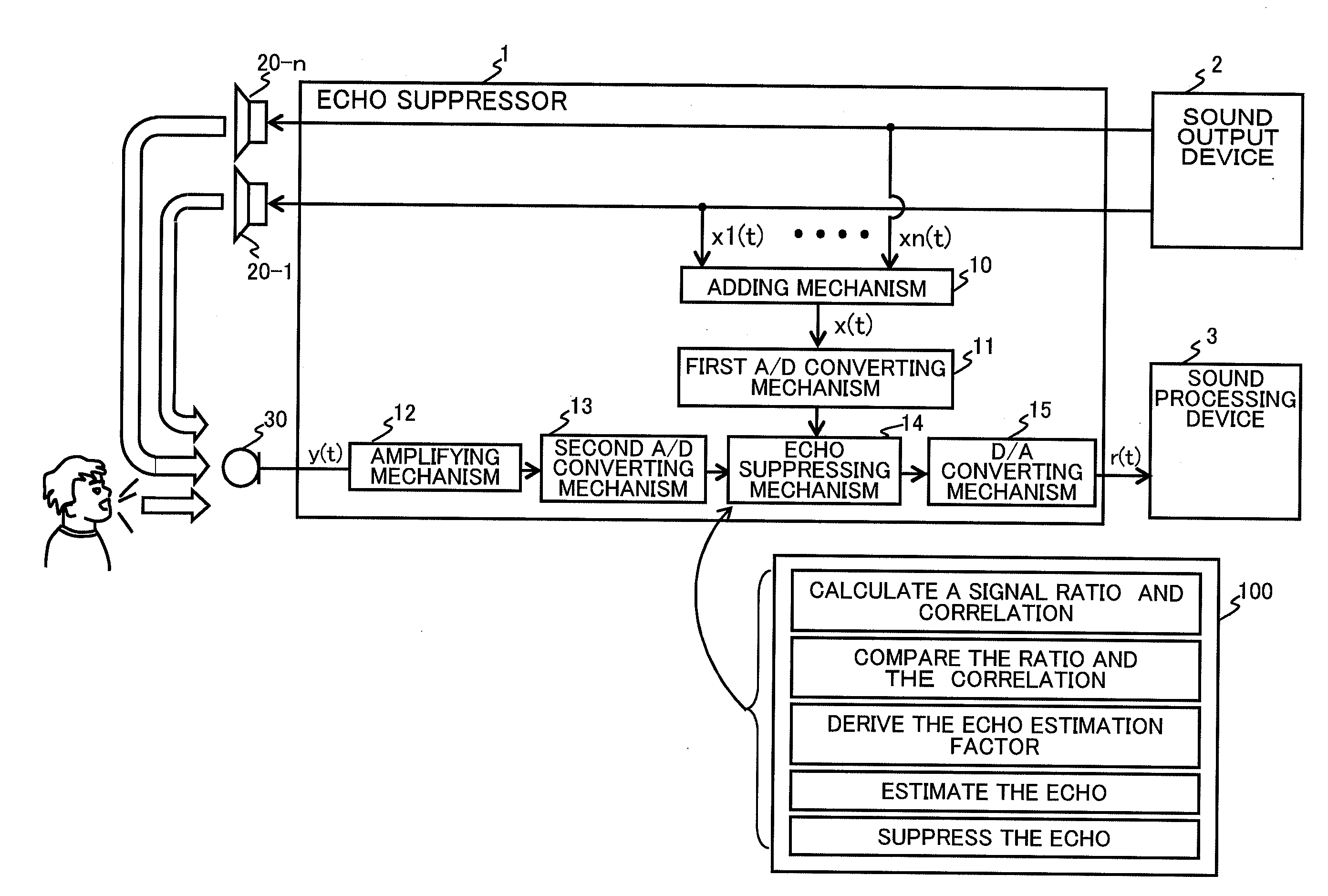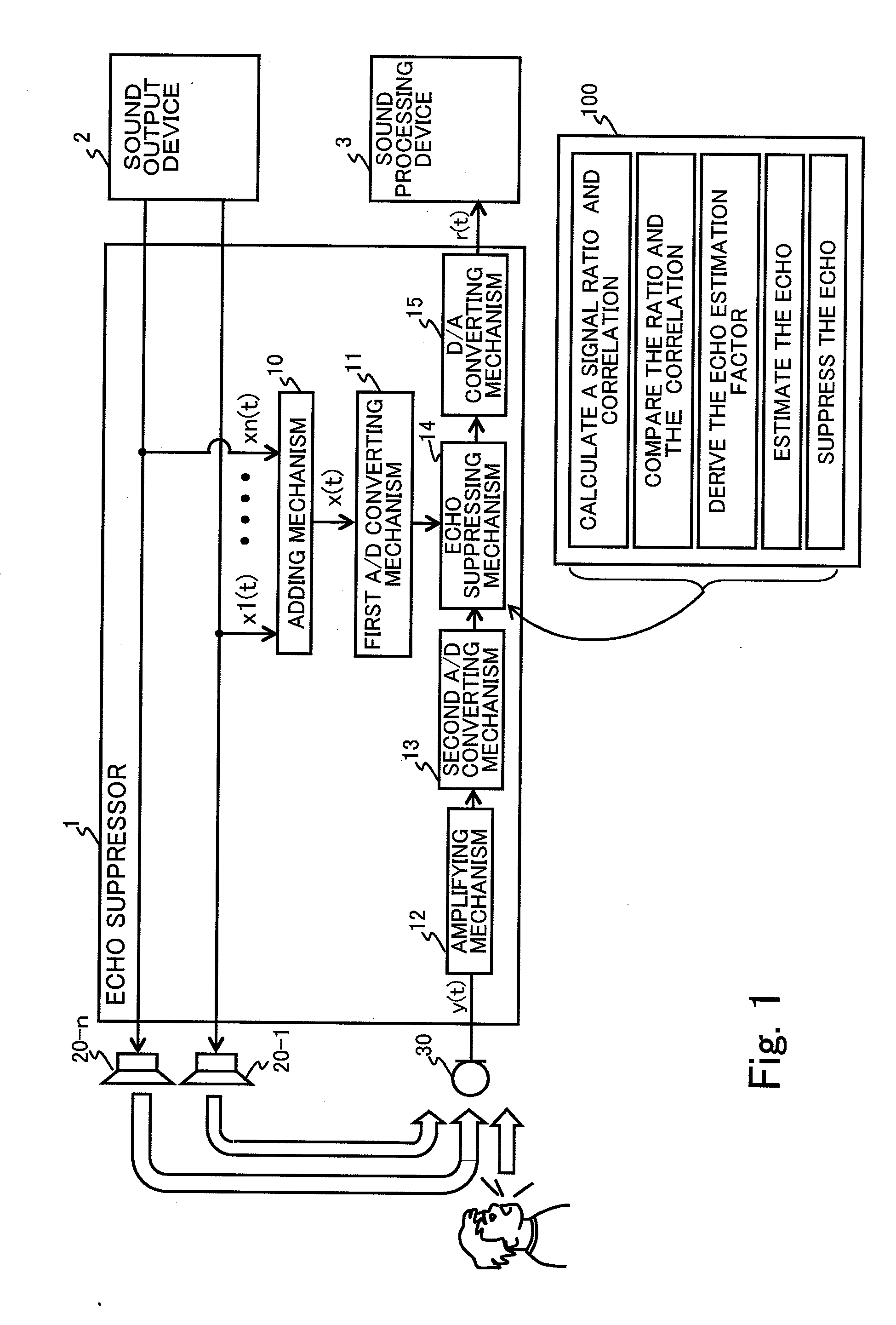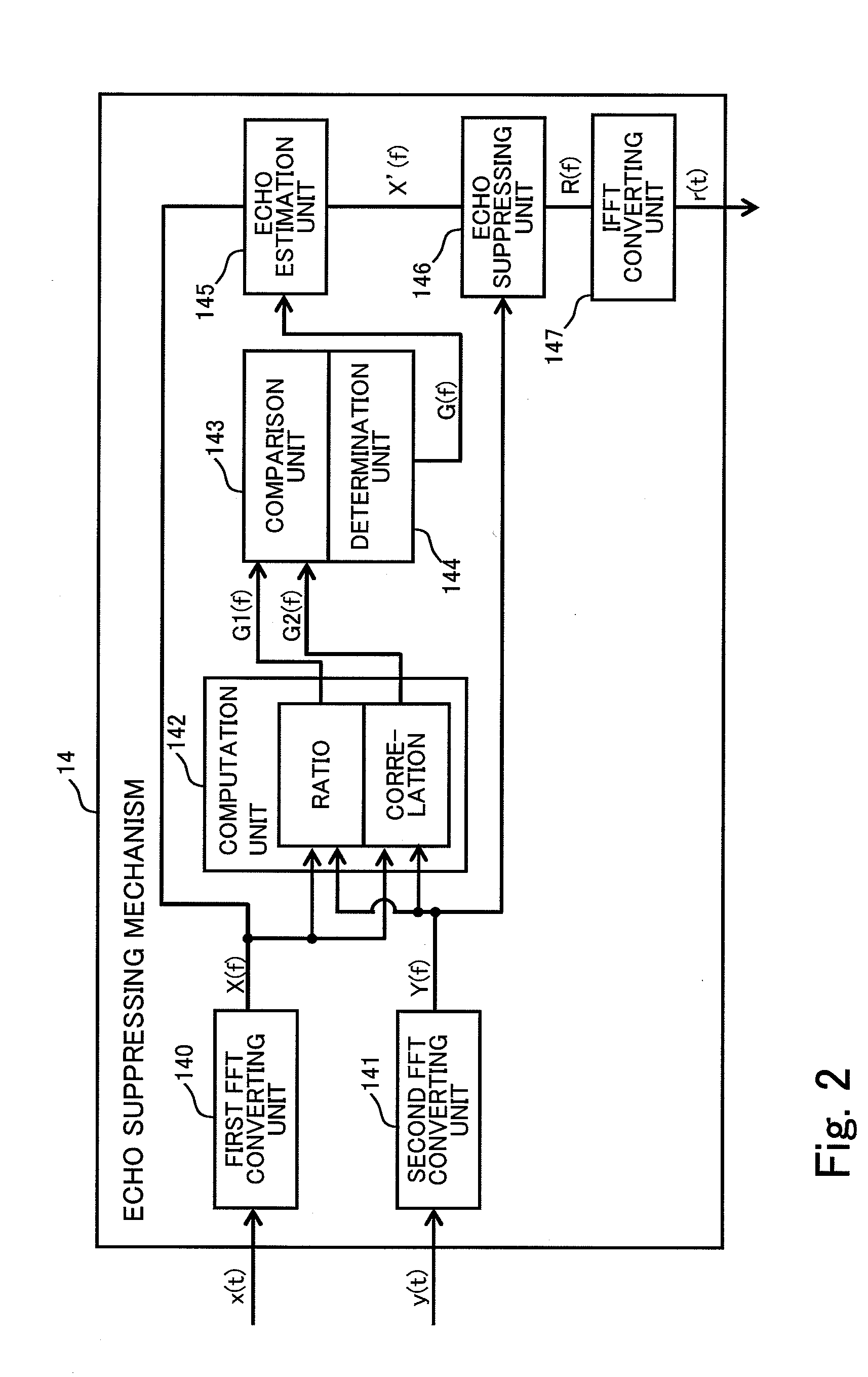Echo suppressor, echo suppressing method, and computer readable storage medium
a technology of echo suppression and computer readable storage media, applied in the field of echo suppression, can solve the problems of low ability to follow a large change of an observation signal, erroneous voice recognition, noise affecting the voice of users, etc., and achieve the effect of suppressing a distortion of a speaker's voice, increasing detection accuracy of the single-talk state, and increasing the detection accuracy of the double-talk sta
- Summary
- Abstract
- Description
- Claims
- Application Information
AI Technical Summary
Benefits of technology
Problems solved by technology
Method used
Image
Examples
first embodiment
[0046]FIG. 1 is a schematic diagram showing a configuration example of an echo suppressor according to a first embodiment of the present invention. In FIG. 1, an echo suppressor 1 can be composed with a computer in, for example, a teleconference system or an in-vehicle navigation system, while the echo suppressor 1 may be composed with a dedicate computer. The echo suppressor 1 cooperates with a sound output device 2 such as a multi-channel audio unit and a sound processing device 3 such as a voice recognition system. The sound output device 2 sends output sound signals as analog signals of plural channels of plural sound output units 20-1, - - - , and 20-n such as a loudspeaker, and output as sounds are emitted therefrom. Further, a sound input unit 30 such as a capacitor microphone picks up an external sound and generates an input sound signal as an analog signal based on the picked sound to output the generated signal to the sound processing device 3. The echo suppressor 1 has an...
second embodiment
[0077]According to a second embodiment, a real amplitude spectrum is used for operations for correction in the first embodiment. The configuration of an echo suppressor of the second embodiment is the same as that of the first embodiment as illustrated in FIG. 1 and thus shall be referred to the first embodiment. Its description is not repeated here. In the following description, the same components as those of the first embodiment are denoted by reference numerals identical to those of the first embodiment, and are not described here.
[0078]FIG. 8 is a functional block diagram showing a functional configuration example of the echo suppressing mechanism 14 of the echo suppressor 1 according to the second embodiment of the present invention. The echo suppressing mechanism 14 of the echo suppressor 1 clips frames of a predetermined temporal length from the added reference sound signal x(t) and the observation sound signal y(t), where the signals x(t) and y(t) are converted to digital s...
PUM
 Login to View More
Login to View More Abstract
Description
Claims
Application Information
 Login to View More
Login to View More - R&D
- Intellectual Property
- Life Sciences
- Materials
- Tech Scout
- Unparalleled Data Quality
- Higher Quality Content
- 60% Fewer Hallucinations
Browse by: Latest US Patents, China's latest patents, Technical Efficacy Thesaurus, Application Domain, Technology Topic, Popular Technical Reports.
© 2025 PatSnap. All rights reserved.Legal|Privacy policy|Modern Slavery Act Transparency Statement|Sitemap|About US| Contact US: help@patsnap.com



